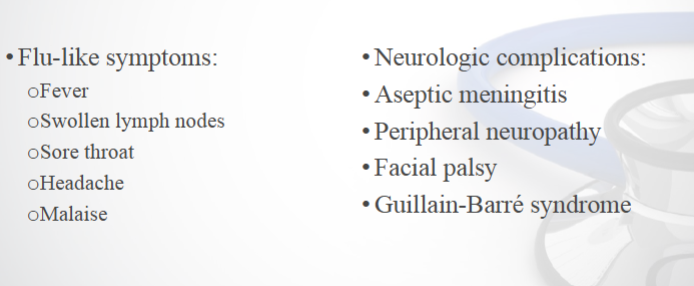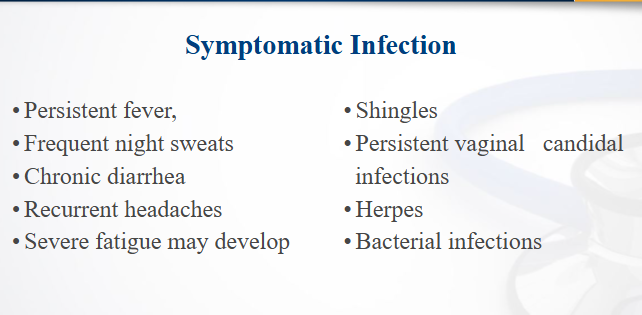HIV
1/15
There's no tags or description
Looks like no tags are added yet.
Name | Mastery | Learn | Test | Matching | Spaced |
|---|
No study sessions yet.
16 Terms
HIV
what is it
targetds
Retrovirus causing immunosuppression → increased susceptibility to infections
Targets: helper T cells (CD4+) and macrophages
transmission
body fluids: blood, semen, vaginal secretion, and breast milk
NOT casual contact
hugging, dry kissing, hand shaking, utensils, or toilet seats
not sputum, tears, saliva, urine, emesis, feces, sweat, resp droplets, or enteric waste
perinatal transmission
Can occur during pregnancy, delivery, or breastfeeding
Untreated HIV-positive mother = ~25% risk of infant infection
Treatment during pregnancy/delivery = risk reduced to <2%
Antiretroviral therapy/ART
HIV patho
Ribonucleic acid virus (retrovirus) → replicates backward: RNA → DNA
Targets: CD4+ T lymphocytes
It binds and fuses with CD4+ T cells
cannot replicate unless inside a living cell
immune problems
problems begin when
severe immunodeficiency when
normal range =
when abnormal
Problems begin when CD4+ T cells <500/µL
Severe immunodeficiency occurs at <200/µL
Normal CD4+ range: 800–1200/µL
Insufficient immune response → opportunistic infections
most common cause of disease, disability, and death
acute infection
describe
cms (pics)
2-4 weeks after infection
very infections and a high viral load
CD4 falls temporarily and returns to baseline

symptomatic infection
what is it
cms
opportunistic infections
cd4 about 200
worse symptoms
HIV advances to active/aggressive infections

AIDS
dx criteria list all (4)
CD4 < 200 and one or more opportunistic infections
infections
malignancies/cancers/dic
wasting: lose 10% of ideal body mass
cognitive changes
DX studies
CD4+ T cell count ↓ (normal = ~800 to 1200)
Viral load ↑
All types blood cells will be decreased in these patients
HIV drug therapy goals 6/7
Delay disease progression
Decrease viral load
Maintain or increase CD4+ T cell counts
Prevent HIV-related symptoms and opportunistic infections
Prevent HIV transmission
monitor nutrition and analgesia
Antiretroviral Therapy/ART
slows down HIV progression
combination therapy used = inhibit viral replication
combination because resistance can form from 1 med
drug interactions: herbal and otc
st. john’s wort, PPIs, etc
opportunistic diseases general
prevention
prognosis
goal for tx
prevent with meds/art, vaccines, etc
usually impossible to completely eradicate after they occur
delay onset and effective mgt
PREP
Reduce risk of sexually-acquired HIV in high-risk adults
Used with other prevention strategies
Tenofovir + Emtricitabine (Truvada)
goals for nursing care
Compliance with drug regimens
Adopting a healthy lifestyle
Maintaining beneficial relationships
Spiritual well-being (regarding life and death)
Coping with the disease and its treatment
EOL care
Promote acceptance of the finite nature of life
Support significant others in coping with loss
Maintain a safe environment
Gerontologic Considerations 3
Increasing rates of HIV among older adults
Antiretroviral therapy (ART) delays disease progression
Reduced death rates from opportunistic infections